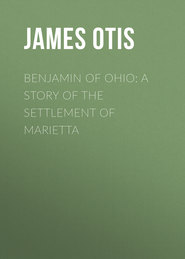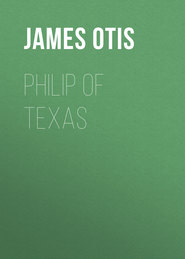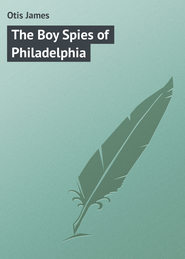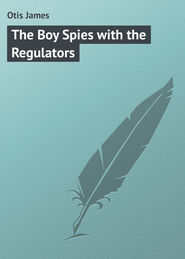По всем вопросам обращайтесь на: info@litportal.ru
(©) 2003-2025.
✖
The Boys of '98
Настройки чтения
Размер шрифта
Высота строк
Поля
“General Kent’s division is being disembarked this afternoon at Juragua, and this will be continued during the night. The assistance of the navy has been of the greatest benefit and enthusiastically given; without them I could not have landed in ten days, and perhaps not at all, as I believe I should have lost so many boats in the surf.
“At present want nothing; weather has been good, no rain on land, and prospects of fair weather.
“Shafter,
“Major-General U. S. Commanding.”
The boys of ’98 occupied the town of Aguadores before nightfall on the twenty-third of June, the Spaniards having applied the torch to many buildings before they fled. The enemy was driven back on to Santiago, General Linares commanding in person, and close to his heels hung General Lawton and the advance of the American forces.
June 24. It was evident that the Spanish intended to make a stand at Sevilla, six miles from Juragua, and five miles from Santiago. The Americans were pressing them hotly to prevent General Linares from gaining time to make preparations for an encounter, when the Rough Riders, as Colonel Wood’s regiment was termed, and the First and Tenth Cavalry fell into an ambuscade. Then what will probably be known as the battle of La Quasina was fought.
It is thus described by a correspondent of the Associated Press:
That the Spaniards were thoroughly posted as to the route to be taken by the Americans in their movement toward Sevilla was evident, as shown by the careful preparations they had made.
The main body of the Spaniards was posted on a hill, on the heavily wooded slopes of which had been erected two blockhouses flanked by irregular intrenchments of stone and fallen trees. At the bottom of these hills run two roads, along which Lieutenant-Colonel Roosevelt’s men, and eight troops of the First and Tenth Cavalry, with a battery of four howitzers, advanced. These roads are but little more than gullies, rough and narrow, and at places almost impassable.
In these trails the fight occurred. Nearly half a mile separated Roosevelt’s men from the regulars, and between, and on both sides of the road in the thick underbrush, was concealed a force of Spaniards that must have been large, judging from the terrific and constant fire they poured in on the Americans.
The fight was opened by the First and Tenth Cavalry, under General Young. A force of Spaniards was known to be in the vicinity of La Quasina, and early in the morning Lieutenant-Colonel Roosevelt’s men started off up the precipitous bluff, back of Siboney, to attack the enemy on his right flank. General Young at the same time took the road at the foot of the hill.
About two and one-half miles out from Siboney some Cubans, breathless and excited, rushed into camp with the announcement that the Spaniards were but a little way in front, and were strongly entrenched. Quickly the Hotchkiss guns in the front were brought to the rear, while a strong scouting line was thrown out.
Then cautiously and in silence the troops moved forward until a bend in the road disclosed a hill where the Spaniards were located. The guns were again brought to the front and placed in position, while the men crouched down in the road, waiting impatiently to give Roosevelt’s men, who were toiling over the little trail along the crest of the hill, time to get up.
At 7.30 A. M. General Young gave the command to the men at the Hotchkiss guns to open fire. That command was the signal for a fight that for stubbornness has seldom been equalled. The instant the Hotchkiss guns were fired, from the hillside commanding the road came volley after volley from the Mausers of the Spaniards.
“Don’t shoot until you see something to shoot at,” yelled General Young, and the men, with set jaws and gleaming eyes, obeyed the order. Crawling along the edge of the road, they protected themselves as much as possible from the fearful fire of the Spaniards, the troopers, some of them stripped to the waist, watching the base of the hill, and when any part of a Spaniard became visible, they fired. Never for an instant did they falter.
One dusky warrior of the Tenth Cavalry, with a ragged wound in his thigh, coolly knelt behind a rock, loading and firing, and when told by one of his comrades that he was wounded, laughed and said:
“Oh, that’s all right. That’s been there for some time.”
In the meantime, away off to the left could be heard the crack of the rifles of Colonel Wood’s men, and the regular, deeper-toned volley-firing of the Spaniards.
Over there the American losses were the greatest. Colonel Wood’s men, with an advance-guard well out in front, and two Cuban guides before them, but apparently with no flankers, went squarely into the trap set for them by the Spaniards, and only the unfaltering courage of the men in the face of a fire that would even make a veteran quail, prevented what might easily have been a disaster. As it was, Troop L, the advance-guard under the unfortunate Captain Capron, was almost surrounded, and but for the reinforcement hurriedly sent forward every man would probably have been killed or wounded.
When the reserves came up there was no hesitation. Colonel Wood, with the right wing, charged straight at a blockhouse eight hundred yards away, and Colonel Roosevelt, on the left, charged at the same time. Up the men went, yelling like fiends, and never stopping to return the fire of the Spaniards, but keeping on with a grim determination to capture that blockhouse.
That charge was the end. When within five hundred yards of the coveted point, the Spaniards broke and ran, and for the first time the boys of ’98 had the pleasure which the Spaniards had been experiencing all through the engagement, of shooting with the enemy in sight.
The losses among the Rough Riders were reported as thirteen killed and forty wounded; while the First Cavalry lost sixteen wounded. Edward Marshall, a newspaper correspondent, was seriously wounded.
While the land-forces were fighting four miles northwest of Juragua, Rear-Admiral Sampson learned that the Spaniards were endeavouring to destroy the railroad leading from Juragua to Santiago de Cuba.
This road runs west along the seashore, under cover of the guns of the American fleet, until within three miles of El Morro, and then cuts through the mountains along the river into Santiago.
When the attempt of the Spaniards was discovered, the New York, Scorpion, and Wasp closed in and cleared the hill and brush of Spaniards.
June 26. The American lines were advanced to within four miles of Santiago, and the boys could look into the doomed city. It was possible to make accurate note of the defences, and most likely officers as well as men were astonished by the preparations which had been made.
There were blockhouses on every hill; from the harbour batteries, sweeping in a semicircle to the eastward of the city, were rifle-pits and intrenchments skilfully arranged. Earthworks, in a regular line, completely shut off approach to the city, and in front of the entrenchments and rifle-pits were barbed-wire fences, or trochas.
Three more charges of guncotton did the dynamite cruiser Vesuvius throw into the batteries at the mouth of Santiago Harbour on the night of June 26th, and next morning the evidences of her work could be seen on the western battery, a portion of which was in ruins. The water-mains which supplied the city of Santiago were cut on the same night, and the doomed city thus brought so much nearer to capitulation.
July 1. Knowing that with the close of June the American army was in readiness for a decisive action, the people waited anxiously, tearfully, for the first terrible word which should be received telling of slaughter and woeful suffering, and it came on the evening of July 1st, when the cablegram given below was flashed over the wires to the War Department:
“Playa del Este, July 1, 1898.
“A. G. O., U. S. Army, Washington:
“Siboney, July 1. Had a very heavy engagement to-day, which lasted from eight A. M. till sundown.
“We have carried their outer works and are now in possession of them.
“There is now about three-quarters of a mile of open country between my lines and city; by morning troops will be entrenched and considerable augmentation of forces will be there.
“General Lawton’s division and General Bates’s brigade, which had been engaged all day in carrying El Caney, which was accomplished at four P. M., will be in line and in front of Santiago during the night.
“I regret to say that our casualties will be above four hundred; of these not many are killed.
(Signed) “W. R. Shafter, Major-General.”
CHAPTER XI.
EL CANEY AND SAN JUAN HEIGHTS
General W. R. Shafter, in his official report of the operations around Santiago, says:
“On June 30th I reconnoitred the country about Santiago and made my plan of attack. From a high hill, from which the city was in plain view, I could see the San Juan Hill and the country about El Caney. The roads were very poor and, indeed, little better than bridle-paths until the San Juan River and El Caney were reached. The position of El Caney, to the northeast of Santiago, was of great importance to the enemy, as holding the Guantanamo road, as well as furnishing shelter for a strong outpost that might be used to assail the right flank of any force operating against San Juan Hill. In view of this, I decided to begin the attack next day at El Caney with one division, while sending two divisions on the direct road to Santiago, passing by the El Pozo house, and as a diversion to direct a small force against Aguadores, from Siboney along the railroad by the sea, with a view of attracting the attention of the Spaniards in the latter direction, and of preventing them from attacking our left flank… But we were in a sickly climate; our supplies had to be brought forward by a narrow wagon-road which the rain might at any time render impassable; fear was entertained that a storm might drive the vessels containing our stores to sea, thus separating us from our base of supplies, and, lastly, it was reported that General Pando, with eight thousand reinforcements for the enemy, was en route for Manzanillo, and might be expected in a few days. Under these conditions I determined to give battle without delay.
“Early on the morning of July 1st Lawton was in position around El Caney, Chaffee’s brigade on the right across the Guantanamo road, Miles’s brigade in the centre and Ludlow’s on the left. The duty of cutting off the enemy’s retreat along the Santiago road was assigned to the latter brigade. The artillery opened on the town at 6.15 A. M. The battle here soon became general, and was hotly contested. The enemy’s position was naturally strong, and was rendered more so by blockhouses, a stone fort and entrenchments cut in solid rock, and the loopholing of a solidly built stone church. The opposition offered by the enemy was greater than had been anticipated, and prevented Lawton from joining the right of the main line during the day, as had been intended. After the battle had continued for some time, Bates’s brigade of two regiments reached my headquarters from Siboney. I directed him to move near El Caney, to give assistance if necessary. He did so, and was put in position between Miles and Chaffee. The battle continued with varying intensity during most of the day and until the place was carried by assault about 4.30 P. M. As the Spaniards endeavoured to retreat along the Santiago road, Ludlow’s position enabled him to do very effective work, and practically to cut off all retreat in that direction.
“After the battle at El Caney was well opened, and the sound of the small-arms fire caused us to believe that Lawton was driving the enemy before him, I directed Grimes’s battery to open fire from the heights of El Pozo on the San Juan blockhouse, situated in the enemy’s entrenchments, extending along the crest of San Juan Hill. This fire was effective, and the enemy could be seen running away from the vicinity of the blockhouse. The artillery fire from El Pozo was soon returned by the enemy’s artillery. They evidently had the range of this hill, and their first shells killed and wounded several men. As the Spaniards used smokeless powder, it was very difficult to locate the position of their pieces, while, on the contrary, the smoke caused by our black powder plainly indicated the position of our battery.
“At this time the cavalry division, under General Sumner, which was lying concealed in the general vicinity of the El Pozo house, was ordered forward with directions to cross the San Juan River and deploy to the right on the Santiago side, while Kent’s division was to follow closely in its rear and deploy to the left. These troops moved forward in compliance with orders, but the road was so narrow as to render it impracticable to retain the column of fours formation at all points, while the undergrowth on both sides was so dense as to preclude the possibility of deploying skirmishers. It naturally resulted that the progress made was slow, and the long-range rifles of the enemy’s infantry killed and wounded a number of our men while marching along this road, and before there was any opportunity to return this fire. At this time Generals Kent and Sumner were ordered to push forward with all possible haste, and place their troops in position to engage the enemy. General Kent, with this end in view, forced the head of his column alongside the cavalry column as far as the narrow trail permitted, and thus hurried his arrival at the San Juan, and the formation beyond that stream. A few hundred yards before reaching the San Juan, the road forks, a fact that was discovered by Lieutenant-Colonel Derby of my staff, who had approached well to the front in a war balloon. This information he furnished to the troops, resulting in Sumner moving on the right-hand road while Kent was enabled to utilise the road to the left. General Wheeler, the permanent commander of the cavalry division, who had been ill, came forward during the morning, and later returned to duty and rendered most gallant and efficient service during the remainder of the day. After crossing the stream the cavalry moved to the right, with a view to connecting with Lawton’s left when he would come up, with their left resting near the Santiago road.
“In the meantime, Kent’s division, with the exception of two regiments of Hawkins’s brigade, being thus uncovered, moved rapidly to the front from the forks previously mentioned in the road, utilising both trails, but more especially the one to the left, and, crossing the creek, formed for attack in the front of San Juan Hill. During this formation the Third Brigade suffered severely. While personally superintending this movement its gallant commander, Colonel Wikoff, was killed. The command of the brigade then devolved upon Lieutenant-Colonel Worth, Thirteenth Infantry, who was soon severely wounded, and next upon Lieutenant-Colonel Liscum, Twenty-fourth Infantry, who, five minutes later, also fell under the terrible fire of the enemy, and the command of the brigade then devolved upon Lieutenant-Colonel Ewers of the Ninth Infantry.
“While the formation just described was taking place, General Kent took measures to hurry forward his rear brigade. The Tenth and Second Infantry were ordered to follow Wikoff’s brigade, while the Twenty-first was sent on the right-hand road to support the First Brigade under General Hawkins, who had crossed the stream and formed on the right of the division. The Second and Tenth Infantry, Colonel E. P. Pearson commanding, moved forward in good order on the left of the division, passing over a green knoll, and drove the enemy back toward his trenches.
“After completing their formation under a destructive fire, advancing a short distance, both divisions found in their front a wide bottom, in which had been placed a barbed-wire entanglement, and beyond which there was a high hill, along the crest of which the enemy was strongly posted. Nothing daunted, these gallant men pushed on to drive the enemy from his chosen position, both divisions losing heavily. In this assault Colonel Hamilton, Lieutenants Smith and Shipp were killed, and Colonel Carroll, Lieutenants Thayer and Myer, all in the cavalry, were wounded. Great credit is due to Brigadier-General H. S. Hawkins, who, placing himself between his regiments, urged them on by voice and bugle-call to the attack so brilliantly executed.
“In this fierce encounter words fail to do justice to the gallant regimental commanders and their heroic men, for, while the generals indicated the formation and the points of attack, it was, after all, the intrepid bravery of the subordinate officers and men that planted our colours on the crest of San Juan Hill and drove the enemy from his trenches and blockhouses, thus gaining a position which sealed the fate of Santiago.
“In the action on this part of the field, most efficient service was rendered by Lieutenant J. H. Parker, Thirteenth Infantry, and the Gatling gun detachment under his command.
“The fighting continued at intervals until nightfall, but our men held resolutely to the position gained at the cost of so much blood and toil.











